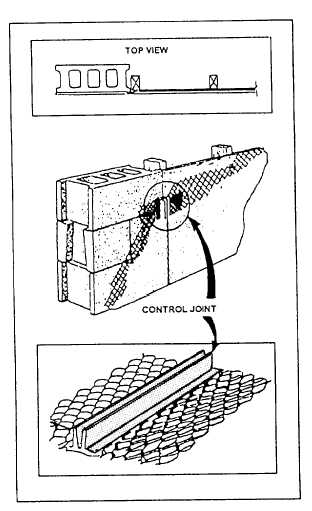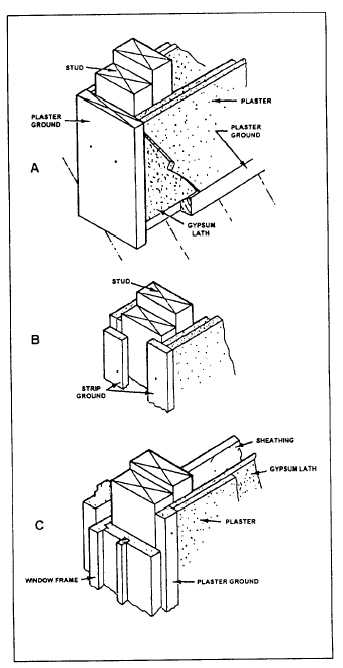Figure 7-9.-Control joint.
finish. They are removed after the plaster has dried.
Narrow strip grounds (fig. 7-10, view B) can also be
used around interior openings.
In window and exterior door openings, the frames
are normally in place before the plaster is applied. Thus,
the inside edges of the side and head jamb can, and often
do, serve as grounds. The edge of the window might also
be used as a ground, or you can use a narrow
7/8-inch-thick ground strip nailed to the edge of the 2-
by 4-inch sill (fig. 7-10, view C). These are normally
left in place and covered by the casing.
A similar narrow ground or screed is used at the
bottom of the wall to control the thickness of the gypsum
plaster and to provide an even surface for the baseboard
and molding. This screed is also left in place after the
plaster has been applied.
Mixing
Some plaster comes ready-mixed, requiring only
the addition of enough water to attain minimum required
Figure 7-10.—Plaster grounds.
workability. For job mixing, tables are available giving
recommended ingredient proportions for gypsum, lime,
lime-portland cement, and portland cement plaster for
base coats on lath or on various types of concrete or
masonry surfaces, and for finish coats of various types.
In this chapter, we’ll cover recommended proportions
for only the more common types of plastering situations.
In the following discussion, one part of cement-
itious material means 100 pounds (one sack) of gypsum,
100 pounds (two sacks) of hydrated lime, 1 cubic foot
7-9



